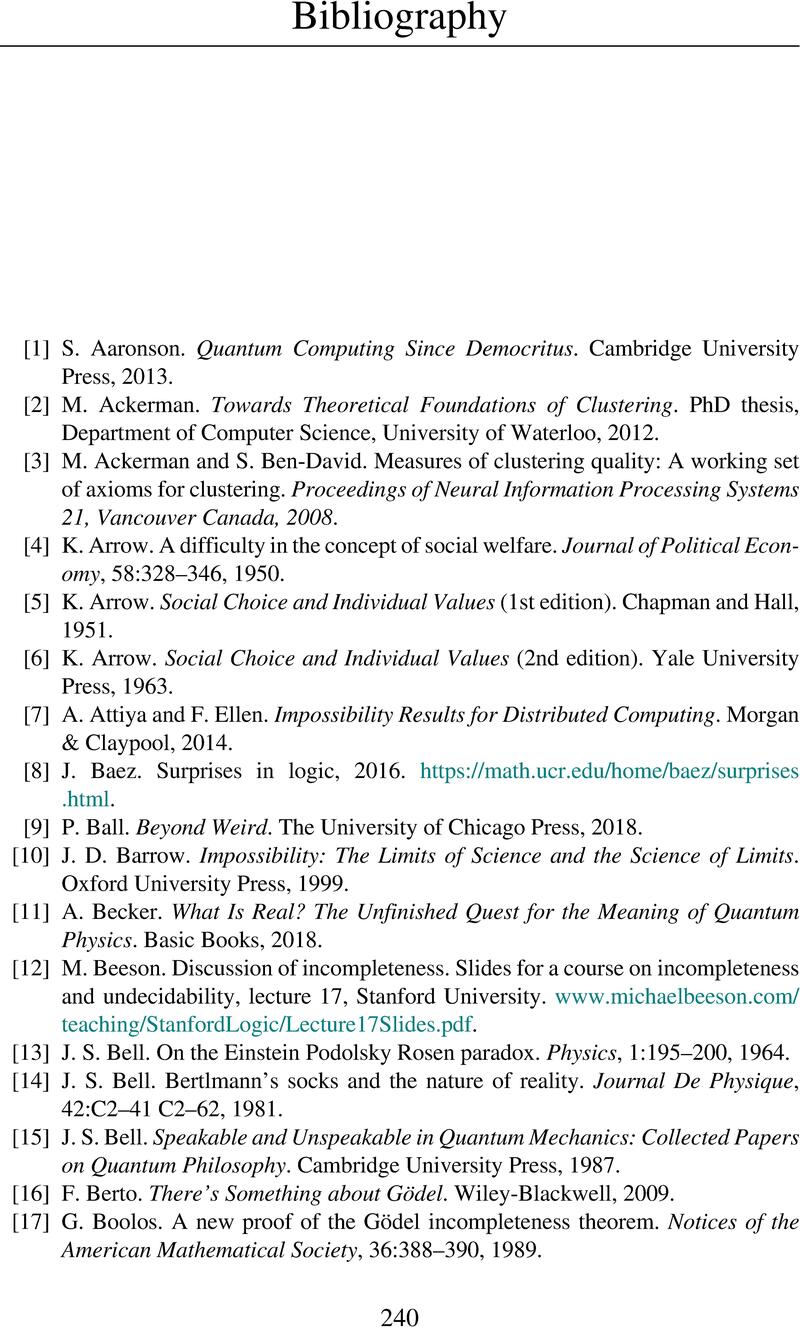 Proven Impossible
Proven Impossible Book contents
- Frontmatter
- Dedication
- Contents
- Preface
- Acknowledgments
- 1 Yes You Can Prove a Negative!
- 2 Bell’s Impossibility Theorem(s)
- 3 Enjoying Bell Magic: With Inequalities and Without
- 4 Arrow’s (and Friends’) Impossibility Theorems
- 5 Clustering and Impossibility
- 6 A Gödel-ish Impossibility and Incompleteness Theorem
- 7 Turing Undecidability and Incompleteness
- 8 Even More Devastating: Chaitin’s Incompleteness Theorem
- 9 Gödel (For Real, This Time)
- Appendix Computer Programs Are Text
- Bibliography
- Index
- References
Bibliography
Published online by Cambridge University Press: 18 February 2024
- Frontmatter
- Dedication
- Contents
- Preface
- Acknowledgments
- 1 Yes You Can Prove a Negative!
- 2 Bell’s Impossibility Theorem(s)
- 3 Enjoying Bell Magic: With Inequalities and Without
- 4 Arrow’s (and Friends’) Impossibility Theorems
- 5 Clustering and Impossibility
- 6 A Gödel-ish Impossibility and Incompleteness Theorem
- 7 Turing Undecidability and Incompleteness
- 8 Even More Devastating: Chaitin’s Incompleteness Theorem
- 9 Gödel (For Real, This Time)
- Appendix Computer Programs Are Text
- Bibliography
- Index
- References
Summary

- Type
- Chapter
- Information
- Proven ImpossibleElementary Proofs of Profound Impossibility from Arrow, Bell, Chaitin, Gödel, Turing and More, pp. 240 - 245Publisher: Cambridge University PressPrint publication year: 2024
